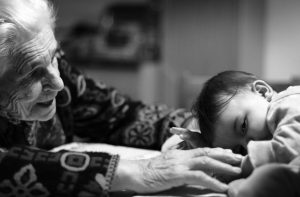 When we think about nursing home abuse and neglect in San Clemente, we often think about the role that healthcare providers and nursing facility staff members play in perpetrating elder abuse or failing to take proper care of an elderly loved one. While elder abuse certainly occurs in nursing home settings due to abuse and neglect perpetrated by employees of the facility, it is also important to keep in mind that many elder abuse injuries occur because of a family member’s behavior. According to a recent study reported in Physician’s Weekly, elder abuse is perpetrated most often by family members—both family members who serve as caregivers and family members who otherwise have regular contact with seniors.
When we think about nursing home abuse and neglect in San Clemente, we often think about the role that healthcare providers and nursing facility staff members play in perpetrating elder abuse or failing to take proper care of an elderly loved one. While elder abuse certainly occurs in nursing home settings due to abuse and neglect perpetrated by employees of the facility, it is also important to keep in mind that many elder abuse injuries occur because of a family member’s behavior. According to a recent study reported in Physician’s Weekly, elder abuse is perpetrated most often by family members—both family members who serve as caregivers and family members who otherwise have regular contact with seniors.
Elder Abuse and Family Members: What the Recent Study Says
The recent study on elder abuse sought to determine what type of person is most commonly responsible for perpetrating abuse. The study was conducted by a team of researchers led by Dr. Gali H. Weissberger at the University of Southern California in Alhambra, and it was published in the Journal of Applied Gerontology. Dr. Weissberger and the other researchers relied on data from the National Center on Elder Abuse (NCEA) resource line from 2014 through 2017. The analyzed nearly 2,000 calls that came into the resource line, concluding that “42.2% involved alleged abuse,” and in nearly 47% of those cases involving abuse, “the most commonly identified perpetrators were family members.”
Family members can be responsible for elder abuse when they serve as caregivers for seniors in their own homes or in the home of the senior. In addition, family members can also perpetrate abuse while an elderly family member is a patient or resident in a nursing home or assisted-living facility. In many of these incidents, there is more than one type of abuse perpetrated. For example, the study reported that, in 23% of elder abuse cases reported, “multiple abuse types were identified.” In other words, seniors are suffering multiple forms of elder abuse at the same time. Indeed, “in two-third of physical abuse cases, physical abuse co-occurred with another type of abuse.” In a majority of those cases, physical abuse coincided with financial elder abuse.
Identifying Signs and Symptoms of Elder Abuse
As Weissberger emphasized, the results of the study “highlight the importance of developing effective strategies to prevent future abuse.” Those strategies involve training more individuals in identifying the signs and symptoms of elder abuse, as well as conducting additional studies involving “high-risk individuals,” such as those with Alzheimer’s and other forms of dementia, “to better understand additional risk factors.”
Whether you have a loved one in a nursing home, assisted-living facility, or at home with a caregiver, it is important to be able to recognize the signs and symptoms of elder abuse. While signs can vary depending upon the type of abuse, the National Institute on Aging (NIA) identifies the following as important warning signs of multiple forms of abuse in a senior:
- Unexplained bruises, cuts, scars, burns, or other physical injuries;
- Signs of physical restraint;
- Difficulty sleeping;
- Depression;
- Confusion;
- Unexplained weight loss;
- Displaying signs of trauma, like rocking back and forth;
- Violent or agitated behavior;
- Withdrawal or acting withdrawn;
- Loss of interest in activities;
- Dirty clothing;
- Unwashed hair;
- General messy appearance; and/or
- Bed sores.
Contact a San Clemente Elder Abuse Lawyer
Do you need help filing an elder abuse claim? An experienced San Clemente nursing home abuse attorney can assist you. Contact the Walton Law Firm to learn more about our services.
See Related Blog Posts:
Superbugs in Escondido Nursing Homes
Ethics of Nursing Home Cameras in San Marcos
 Southern California Nursing Home Abuse Lawyer Blog
Southern California Nursing Home Abuse Lawyer Blog








